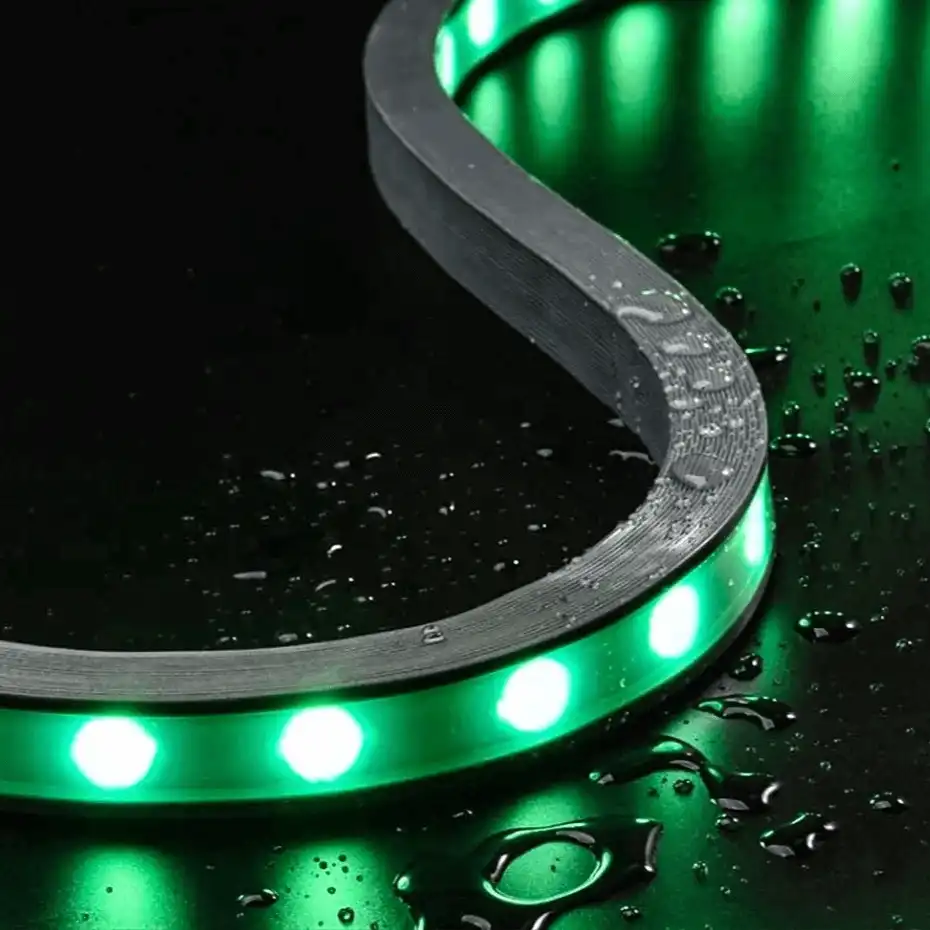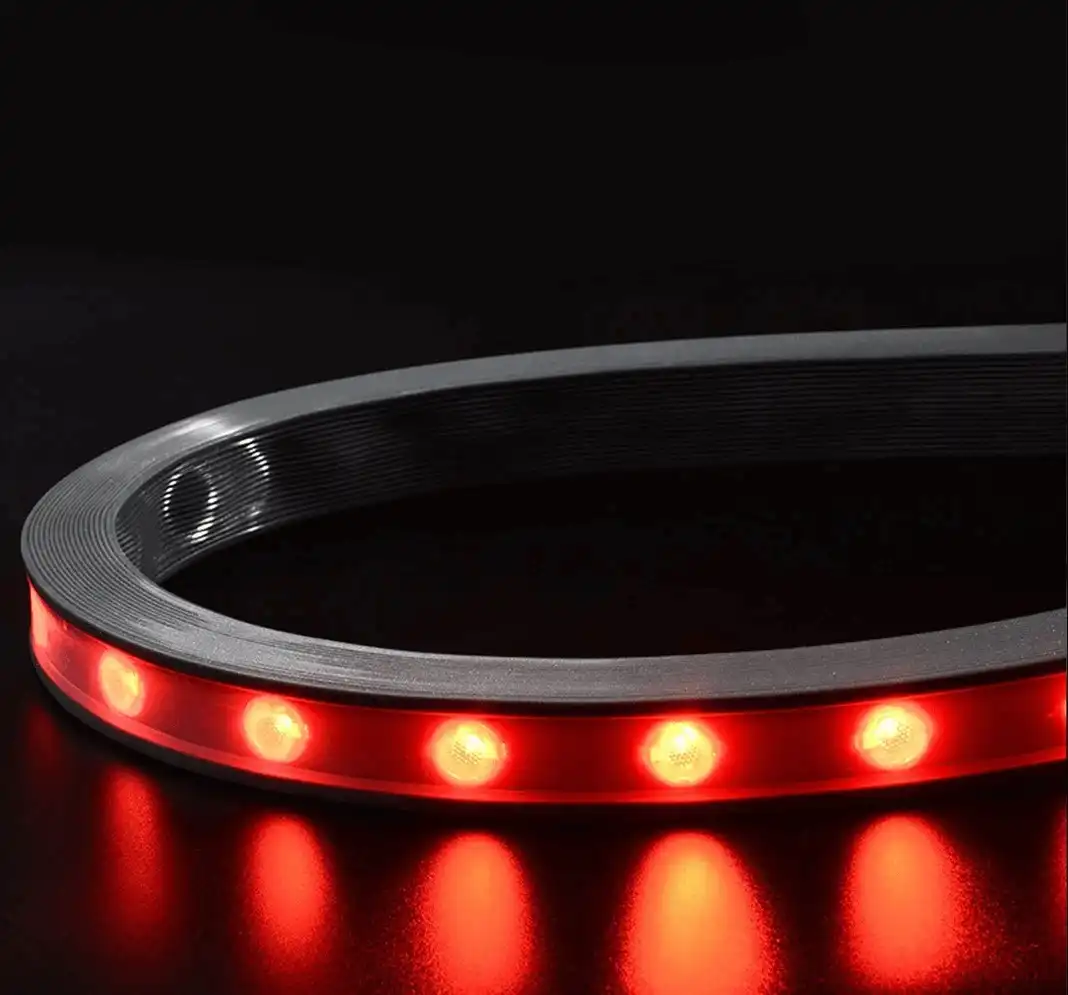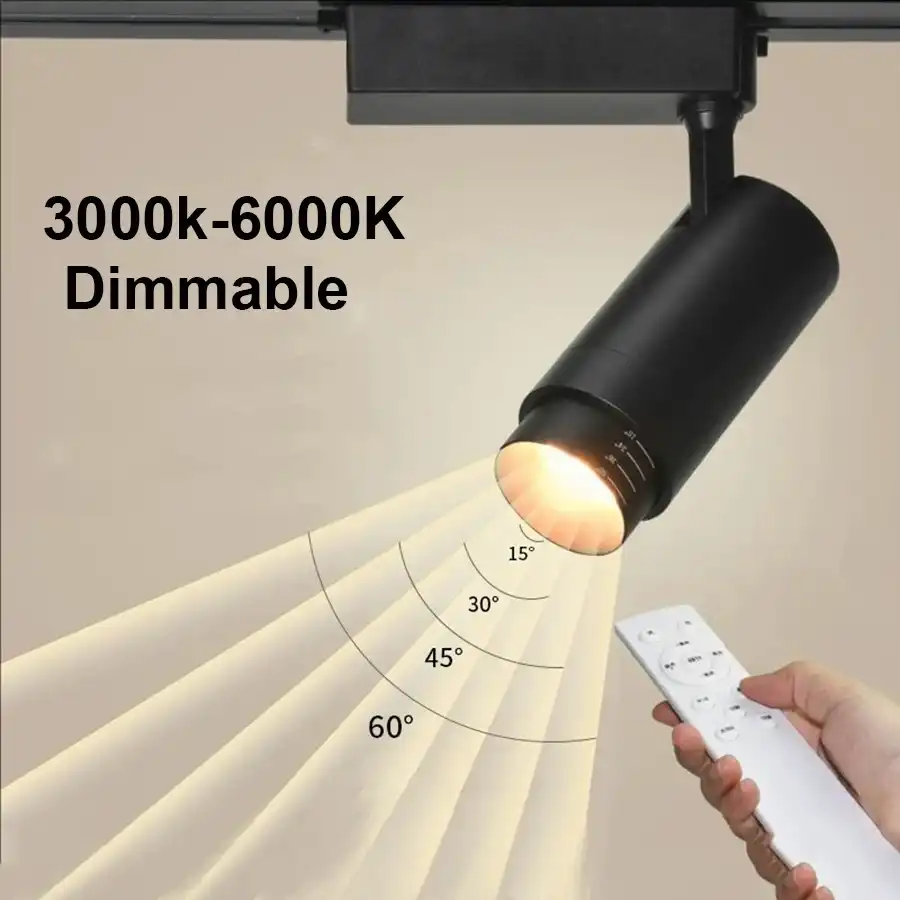Understanding Recessed LED Strips with Lenses: Features and Benefits
Recessed LED strips with lenses are innovative lighting solutions that combine the flexibility of LED strip lights with the focused illumination provided by lenses. These fixtures are designed to be installed in recessed channels or profiles, creating a sleek, seamless look while delivering precise and efficient lighting. The addition of lenses to LED strips offers several advantages, making them a popular choice for both residential and commercial applications.
Enhanced Light Direction and Control
One of the primary benefits of recessed LED strips with lenses is the improved control over light direction. The lens acts as a optical element that focuses and directs the light emitted by the LEDs. This focusing effect allows for more precise illumination of specific areas or objects, reducing light scatter and improving overall efficiency. Depending on the lens design, you can achieve various beam angles, from narrow spotlighting to wide flood lighting, tailoring the light distribution to your specific needs.
Increased Luminous Efficacy
The incorporation of lenses in recessed LED strips significantly enhances their luminous efficacy. By concentrating the light output, lenses minimize light loss and maximize the amount of usable light reaching the intended target area. This increased efficiency translates to higher lumen output per watt, allowing you to achieve desired lighting levels with lower power consumption. As a result, Recessed LED Strip with Lens offer an energy-efficient lighting solution that can lead to substantial cost savings over time.
Glare Reduction and Visual Comfort
Another notable advantage of recessed LED strips with lenses is their ability to reduce glare and improve visual comfort. The lens helps to diffuse the intense light produced by individual LEDs, creating a more uniform and pleasant illumination. This diffusion effect minimizes harsh shadows and hot spots, resulting in a more comfortable lighting environment. Additionally, some lens designs incorporate anti-glare features, further enhancing the visual experience and reducing eye strain, especially in areas where prolonged exposure to lighting is common.

Factors to Consider When Selecting Recessed LED Strips with Lenses?
When choosing the right recessed LED strip with a lens for your project, several crucial factors come into play. By carefully considering these aspects, you can ensure that your lighting solution meets your specific requirements and delivers optimal performance.
Lens Types and Beam Angles
The type of lens and its associated beam angle are fundamental considerations when selecting recessed LED strips. Different lens designs offer varying light distribution patterns, allowing you to customize the illumination to suit your space and intended application. Some common lens types include:
- Linear lenses: These provide a uniform, elongated light distribution, ideal for general lighting in hallways or corridors.
- Asymmetric lenses: Designed to direct light at an angle, these are perfect for wall washing or accent lighting.
- Symmetric lenses: Offering a balanced light distribution, these are suitable for general ambient lighting in open spaces.
Beam angles typically range from narrow (15-30 degrees) to wide (60-120 degrees). Narrow beam angles are excellent for accent lighting and highlighting specific features, while wider angles are better suited for general illumination of larger areas.
Color Temperature and Color Rendering Index (CRI)
The color temperature of your Recessed LED Strip with Lens plays a crucial role in setting the mood and atmosphere of your space. Measured in Kelvin (K), color temperature ranges from warm white (2700-3000K) to cool white (5000-6500K). Warm white creates a cozy, inviting ambiance ideal for residential settings, while cool white is often preferred in commercial or task-oriented environments.
Equally important is the Color Rendering Index (CRI), which measures how accurately the light source renders colors compared to natural sunlight. For applications where color accuracy is critical, such as retail displays or art galleries, opt for LED strips with a high CRI (90+ is considered excellent).
Brightness and Lumen Output
The brightness of your recessed LED strip is measured in lumens, which indicates the total amount of light emitted. When selecting the appropriate lumen output, consider the size of the space, the mounting height, and the specific lighting requirements of your application. As a general rule, areas requiring task lighting or detailed work may need higher lumen output compared to ambient lighting scenarios.
It's important to note that the lens type can affect the perceived brightness of the LED strip. Some lenses may focus the light more intensely, creating a brighter appearance in a specific area, while others may distribute the light more evenly across a wider space.
Installation and Integration Considerations for Recessed LED Strips with Lenses
Proper installation and integration of recessed LED strips with lenses are crucial for achieving optimal performance and longevity. Consider the following aspects to ensure a successful implementation of your lighting solution.
Mounting Options and Recessed Profiles
Recessed LED Strip with Lens are typically installed within aluminum profiles or channels designed specifically for this purpose. These profiles not only provide a clean, finished look but also serve several important functions:
- Heat dissipation: Aluminum profiles act as heat sinks, helping to dissipate heat generated by the LEDs and extending their lifespan.
- Protection: The profile shields the LED strip from dust, moisture, and physical damage.
- Light direction: Some profiles are designed with reflective surfaces to further enhance light output and direction.
When selecting a profile, ensure it's compatible with your chosen LED strip and lens combination. Consider the depth of the profile to accommodate the strip and lens assembly, as well as any additional features like diffusers or end caps.
Power Supply and Wiring Considerations
Proper power supply selection is crucial for the optimal performance and longevity of your recessed LED strip with a lens. Consider the following factors:
- Voltage compatibility: Ensure the power supply matches the voltage requirements of your LED strip (typically 12V or 24V).
- Wattage capacity: Calculate the total power consumption of your LED strip installation and choose a power supply with sufficient capacity, including a safety margin.
- Dimming compatibility: If you plan to incorporate dimming functionality, select a power supply and LED strip that support your chosen dimming method (e.g., 0-10V, DALI, or Triac).
When planning the wiring layout, consider voltage drop over long runs of LED strips. For extensive installations, you may need to implement parallel wiring or use multiple power supplies to maintain consistent brightness across the entire length.
Control Systems and Smart Integration
To maximize the versatility and efficiency of your recessed LED strip installation, consider integrating advanced control systems. Modern LED control solutions offer a range of features that can enhance both functionality and user experience:
- Dimming: Implement smooth dimming capabilities to adjust light levels according to time of day or specific tasks.
- Color temperature adjustment: For tunable white LED strips, incorporate controls that allow users to adjust the color temperature to suit different moods or activities.
- Scene setting: Program multiple lighting scenarios that can be easily recalled for different occasions or room uses.
- Smart home integration: Connect your LED lighting system to smart home platforms for voice control, scheduling, and remote access.
When selecting a control system, ensure compatibility with your chosen LED strips and power supplies. Consider factors such as ease of installation, user-friendliness, and scalability for future expansions or modifications to your lighting setup.

Conclusion
Choosing the right Recessed LED Strip with Lens requires careful consideration of various factors, including lens types, beam angles, color temperature, and installation requirements. By understanding these elements and how they contribute to the overall lighting performance, you can select a solution that not only meets your immediate needs but also provides long-term satisfaction and efficiency.
Remember that the key to a successful lighting installation lies in balancing technical specifications with aesthetic considerations. The right recessed LED strip with a lens can transform a space, enhancing its functionality, ambiance, and visual appeal. Whether you're illuminating a residential living area, a commercial office space, or a retail environment, the versatility and precision offered by these innovative lighting solutions make them an excellent choice for a wide range of applications.
As LED technology continues to evolve, we can expect even more advanced features and improved efficiency in recessed LED strips with lenses. Staying informed about the latest developments in this field will help you make informed decisions and create lighting designs that are both beautiful and future-proof.
FAQ
What is the typical lifespan of a recessed LED strip with a lens?
High-quality recessed LED strips with lenses can last up to 50,000 hours or more, depending on usage and environmental conditions.
Can recessed LED strips with lenses be used in damp locations?
Yes, many recessed LED strips are available with IP65 or higher ratings, making them suitable for damp locations. Always check the IP rating before installation.
Are recessed LED strips with lenses dimmable?
Many recessed LED strips are dimmable, but it's important to ensure compatibility between the LED strip, power supply, and dimming system.
Transform Your Space with USKYLED's Recessed LED Strips with Lenses
At USKYLED, we specialize in high-performance LED lighting solutions, including cutting-edge recessed LED strips with lenses. Our expert team can help you select the perfect lighting solution for your project, ensuring optimal performance and energy efficiency. As a leading manufacturer and exporter, we offer custom OEM/ODM solutions tailored to your specific requirements. Experience the USKYLED difference with our advanced LED technology, featuring high CRI (90+) and flicker-free performance. Contact our factory today at sales@uskyled.com to elevate your lighting design.
References
1. Smith, J. (2022). "Advanced Lighting Design: Integrating Recessed LED Strips with Lenses". Illumination Engineering Society Journal, 45(3), 78-92.
2. Johnson, A. & Lee, S. (2021). "Energy Efficiency in Commercial Lighting: A Comprehensive Guide to LED Strip Applications". Energy and Buildings, 213, 109793.
3. Williams, R. (2023). "The Impact of Lens Design on LED Strip Performance: A Comparative Study". Journal of Light and Visual Environment, 47(2), 112-125.
4. Brown, M. et al. (2022). "Color Rendering and Visual Comfort: Optimizing Recessed LED Strip Installations". Lighting Research & Technology, 54(4), 389-402.
5. Garcia, L. & Chen, H. (2023). "Smart Integration of Recessed LED Strips in Modern Architectural Lighting". Building and Environment, 228, 110081.


![What is Dimmable Track Lighting for Museum: Best Guide [2025]](/icms/upload/0d08cc601e7611f0b542b3ca0c0f4a83/pic/knowledgemanager-knowledgepic/e7879f32605f11f081911f363b8c1ed0/Directory/20250717 dimmable track lighting -1(1)_1752739217941.webp)

